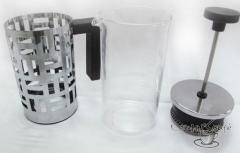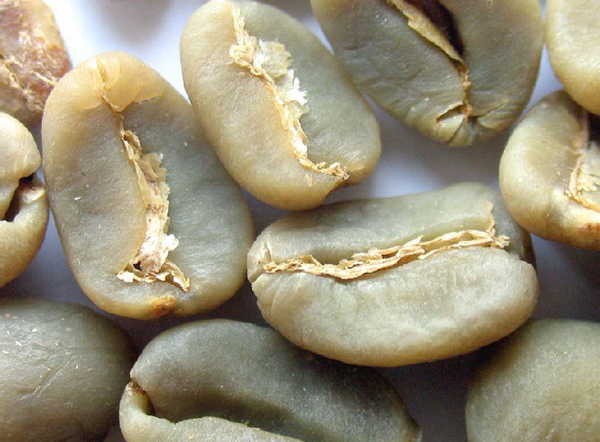Treatment of half-sun or half-water washing (semi-washed) for coffee taste Honey treatment
Generally speaking, if the pulp layer is removed effectively and properly, the coffee seeds will be clean, and the beans will taste clear when roasted, but can not be removed quickly, and some coffee berries may be left on the beans. If handled well, this will bring a hint of fruit to the baked coffee, but if it is not disposed of in time, the pulp will even be overfermented or even moldy. Then this bean will have a very bad smell and will no longer be a cup of coffee.
The traditional treatment methods have two kinds of water washing (wet-process) and solarization (dry-process) due to regional differences. The method of washing generally makes the coffee taste refreshing and sour, but it requires a lot of water resources and more steps, so the price is more expensive. Many African and South American countries use this method. On the other hand, the method of tanning is easier to operate, and the processed beans taste low, sometimes leaving some earthy or miscellaneous flavors. Some South American countries and Asia use this method to deal with coffee, such as Brazil and Indonesia. In the following articles, we will introduce the process of washing and sun treatment in depth.
Since water washing and solarization have their own advantages and disadvantages in the processing process, people later invented the treatment method of half-sun or half-water washing (semi-washed) by combining the two traditional methods. In Costa Rica, it is called honey process or Miel process, and in Indonesia it is called Giling Basah.
Finally, the source of a cup of coffee-coffee fruit, the environment in which it grows determines the flavor of the coffee. The soil, altitude, climate and microclimate where coffee trees grow all determine the flavor of coffee. Like the rice around us, the northeast rice, the soil is fertile, due to climatic conditions, can only be harvested once a year, but the rice is more flavor, more fragrant. The southern rice, although twice a year, or even more, but the taste of rice is flat, and the texture is not so close. The same is true of coffee beans. Coffee trees growing at high elevations are willing to mature slowly because of the temperature difference, but they can absorb more nutrients and form a flavor, while coffee grown on the plain can be ripe for more than a year and can be planted on a large scale. But the taste is greatly reduced.
In the whole coffee formation process, the first two steps, coffee berry growth and processing process determine the coffee flavor (flavor), the tone of this coffee is low and complex, or melodious frivolous, basically doomed in this link. The roasting of the coffee determines the taste of the coffee (taste). Whether the coffee is bitter, sour, or lingering, which is basically explained by the baker on the basis of the quality of the beans, the barista will adjust the variables in the production through the understanding of the beans themselves (including raw beans and roasting), properly present the coffee, and control the concentration at the same time.
Therefore, from the whole process above, we can see that the taste of a cup of coffee can not be determined by a single link, and only if each link is handled properly, can a cup of delicious, smooth and fragrant coffee appear in front of the coffee drinker. On the other hand, if anything goes wrong, it will completely destroy a cup of coffee.
Important Notice :
前街咖啡 FrontStreet Coffee has moved to new addredd:
FrontStreet Coffee Address: 315,Donghua East Road,GuangZhou
Tel:020 38364473
- Prev

Eileen series bodum professional series of French presser coffee utensils Japanese coffee utensils
Eileen series is a professional series in bodum. Hollowed-out metal cup covers, plastic packages, unique cup handles, and dense and durable strainer all highlight the charm of Eileen series. Although the new eileen bodum does not deliberately say anything, careful people will notice that the shape of the straight handle has been set up, the base has also been adjusted, and the key price has also been changed from the original.
- Next

Coffee appreciation Handbook Indian monsoon coffee beans treated by monsoon
Throughout the process, we can see that the taste of a cup of coffee can not be determined by a single link. Only when each link is handled properly can a cup of delicious, smooth and fragrant coffee appear in front of coffee drinkers. On the other hand, if anything goes wrong, it will completely destroy a cup of coffee information from the Coffee appreciation Handbook.
Related
- Beginners will see the "Coffee pull flower" guide!
- What is the difference between ice blog purified milk and ordinary milk coffee?
- Why is the Philippines the largest producer of crops in Liberia?
- For coffee extraction, should the fine powder be retained?
- How does extracted espresso fill pressed powder? How much strength does it take to press the powder?
- How to make jasmine cold extract coffee? Is the jasmine + latte good?
- Will this little toy really make the coffee taste better? How does Lily Drip affect coffee extraction?
- Will the action of slapping the filter cup also affect coffee extraction?
- What's the difference between powder-to-water ratio and powder-to-liquid ratio?
- What is the Ethiopian local species? What does it have to do with Heirloom native species?

